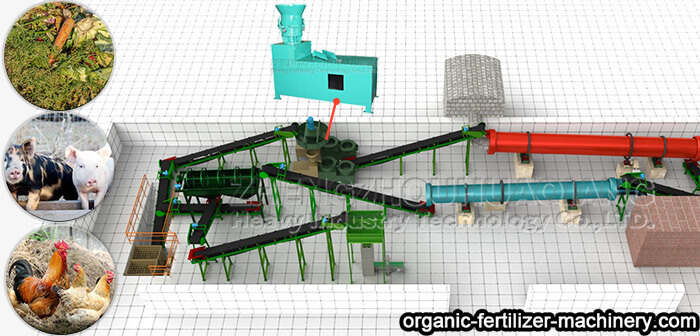With the development of ecological agriculture, more and more attention has been paid to ecological planting in the field of modern agriculture, focusing on green organic pollution-free. Simple inorganic fertilizers have been phased out, and bio-organic fertilizers are more and more popular. Therefore, solid granular fertilizer granulator has important significance and market prospects.
Bio-organic fertilizer production line through industrial mechanical treatment, manure waste into bio-organic fertilizer. The bio-organic fertilizer production line has simple equipment and high value of bio-organic fertilizer products. Flat die granulator is an important tool for the bio-organic fertilizer production line. Next, we will introduce the processing method of flat die granulator. Through the working principle of flat die granulator, we can select suitable raw materials and production line technology of bio-organic fertilizer.
Granulation component is an important part of the flat die extrusion granulator, and it is also the most complex and precise component of the whole flat die granulator. The flat die granulator is mainly composed of a granule, a stencil, an inner cylinder and a distributor. The formwork of the flat die granulator rotates with the material as the hollow shaft rotates. The inner cylinder is fixed to the template by screws, and the inner cylinder mainly limits the distribution range of the material. The granulation assembly of the flat die granulator is responsible for cutting the granules and discharging the organic fertilizer granules out of the granulator.
Bio-organic fertilizer production line uses flat-die granulator to process organic fertilizer, which has good particle hardness and is widely suitable for raw materials with more fibers. Bio-organic fertilizer granules release slowly in soil, greatly improving the utilization rate of fertilizer.
